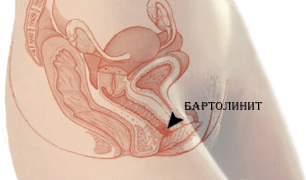Modern methods of treatment of uterine polyps
 Uterine polyps are called benign formations that protrude on its mucous surface. They can be either on a "wide base" or on "legs".Polyps are multiple or solitary, dense and soft, smooth and vice versa, dark red or whitish. Until now, the reasons for the appearance of polyps have not been fully understood, but, in the opinion of gynecologists, they arise because of the hormonal changes that occur during menopause or pregnancy, also due to inflammatory diseases in the uterus or due to trauma to the uterus and itsNeck. In this article we will consider modern methods of treatment of uterine polyps.
Uterine polyps are called benign formations that protrude on its mucous surface. They can be either on a "wide base" or on "legs".Polyps are multiple or solitary, dense and soft, smooth and vice versa, dark red or whitish. Until now, the reasons for the appearance of polyps have not been fully understood, but, in the opinion of gynecologists, they arise because of the hormonal changes that occur during menopause or pregnancy, also due to inflammatory diseases in the uterus or due to trauma to the uterus and itsNeck. In this article we will consider modern methods of treatment of uterine polyps.
Polyps, like many other gynecological diseases, often do not make themselves felt to their landlady, and at the initial stage may not be noticeable even on ultrasound. Therefore, doctors will be able to help you only with your own help. If you have more abundant mucous discharge, if they have acquired a darkish color and a specific odor, if the critical days have become longer and appeared between menstrual bleeding, the pains in the lower abdomen similar to the contractions began to appear, and also dizziness and weakness are all the true signs that, That it's time to see a doctor! Do not delay, because if you do not remove the polyp in time, it can grow to a malignant tumor.
If you decide to see a doctor, then prepare yourself for an accurate description of the exciting symptoms, examination on the chair, ultrasound, and also for a not very pleasant procedure - a colposcopy for which a scrap is taken from a polyp to understand a benign or malignant formation. Polyps do not need to be treated in conservative ways, much less folk remedies and at home.
Methods for treatment of uterine polyps
Treatment of uterine polyps mainly occurs surgically. The polyp is removed, but there are several ways of surgical removal, including surgical intervention, radio wave and laser therapy, cryodestruction. The polyp, placed on the stalk, in surgical ways, is twisted and then ground, and the place where the formation was formed is cauterized.
More modern and common methods are such modern methods as diathermo-surgical, because the equipment required for this method is relatively cheaper. When carrying out procedures for the removal of polyps, is used by the method of diathermic excision , which in fact can be called an electric knife. After such removal of the polyp the tissues will fully heal and recover after two to three months. The procedure is painless, therefore only local anesthesia is preliminarily done. There is one drawback in this procedure, it consists in the fact that this procedure leaves scars on the cervix, which can lead to its rupture during childbirth.
Another method of removing the polyp is radio wave therapy , thanks to which the formation is removed by radio waves. This procedure less affects the cervical tissue, and the recovery process ends in six to eight weeks.
The next method that we will consider is the cryodestruction .It consists in the use of cooled liquid nitrogen, and it is cooled to the lowest possible temperature. This procedure is prescribed for 8-10 days of the menstrual cycle. The disadvantage of this method is that the healing process can last up to three months, this depends on the size of the leg.
Laser Therapy is a procedure using laser beams. This procedure is the most painless, a woman does not even have anesthesia, and there are no bruises during her procedure. All these advantages result from the fact that the vessels, even those affected, are immediately "frozen" when exposed to a laser. Also after the procedure, the majority of women do not have scars and scarring. Carry out the procedure for 5-7 days of the menstrual cycle.
When cauterizing polyps, a medical preparation such as solkagin is used, it is also used to cauterize condylomas and erosions. This drug is harmless to the reproductive system. The drug is applied to the affected area, after which it forms a crust, which is rejected after a few days. To remove the polyp, this procedure is carried out several times.



